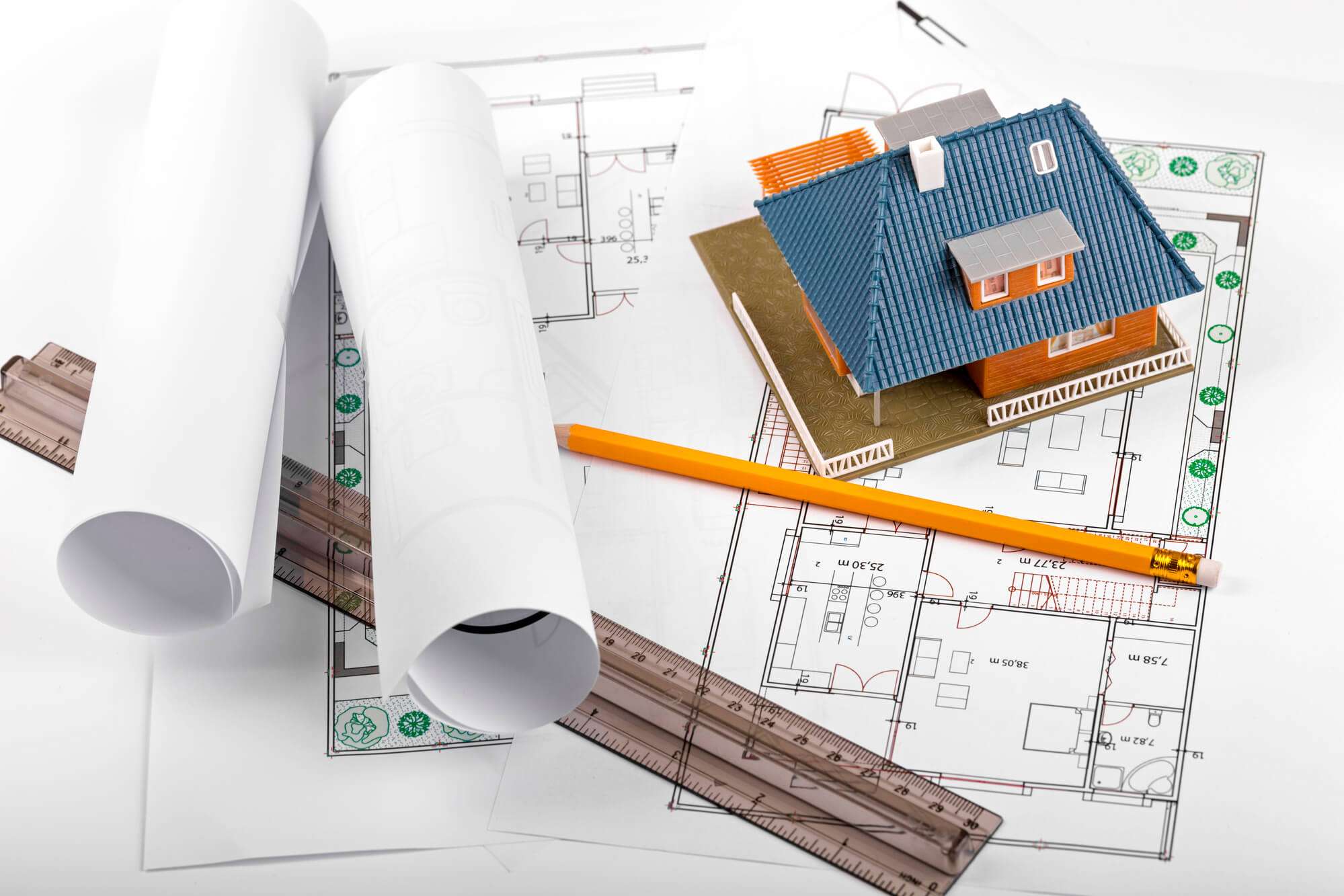
Rated And Certified! Your Detailed List Of Building Rating Tools
Some of them are mandatory ─ you will need them to comply with state regulations. Others are voluntary to help you up your game in the market. But all of them lead to a healthier and more sustainable environment for all of us.
Building rating tools and certificates are designed to assess how well a building performs when it comes to energy and water consumption, waste management, carbon emissions, internal comfort, tenants’ health, and the well-being of entire communities.
Making sure you comply with laws.
No secret, our built environment is one of the largest contributors to greenhouse gas emissions, Hence, the increasingly demanding requirements of state and local legislation in Australia.
A case in point. The National Construction Code (NCC) was updated in 2019 and requires solutions that solicit more savings in energy and greenhouse gas emissions in the construction industry.
Gaining a competitive edge in the market.
Building rating certificates not only help you comply with regulations. When you have your building rated for sustainability and health safety, you can expect the following outcomes:
- lower operating costs and increased savings.
- increased asset values.
- higher productivity.
- improved health and well-being of occupants.
In this blog post, we share key information for each rating scheme available for the Australian market and give examples of certified buildings for a sip of inspiration. Let’s dive in!
NatHERS – Nationwide House Energy Rating Scheme
Website: https://www.nathers.gov.au/
The NatHERS rating scheme is designed to assess a home’s potential energy use. The more stars, the more energy-efficient is your home, and the less energy you need to heat and cool the building.
NatHERS uses a 10-star rating system, six stars being the minimum required rating for new houses and apartment buildings across most of Australia. This means that you will need to receive at least six stars energy rating to get a building permit.
NatHERS is administered by the Department of Industry, Science, Energy, and Resources on behalf of the states and territories.
The data about the building’s relevant features is run through specially designed software tools to calculate how much energy will be needed to heat and cool the home. Four accredited tools are on the list:
- AccuRate Sustainability v2.4.0 (3.21)
- FirstRate5 v5.3.0 (3.21)
- BERS Pro v4.4.0.1 (3.21)
- HERO v1.0-beta(3.21)
These software tools are referenced in the NCC 2019 and can be used to demonstrate compliance with the energy efficiency requirements for houses and individual units in apartments (Class 1 and Class 2 buildings).
Note that NatHERS rates the energy efficiency of the building envelope; appliances used in the house are not included. However, work is currently underway to include and rate the total building energy use under this scheme.
Take a look at the Hacksaw House that achieved a whopping 10 Star energy rating.
The designers opted for sustainable solutions that are also refreshing, innovative, and creative.
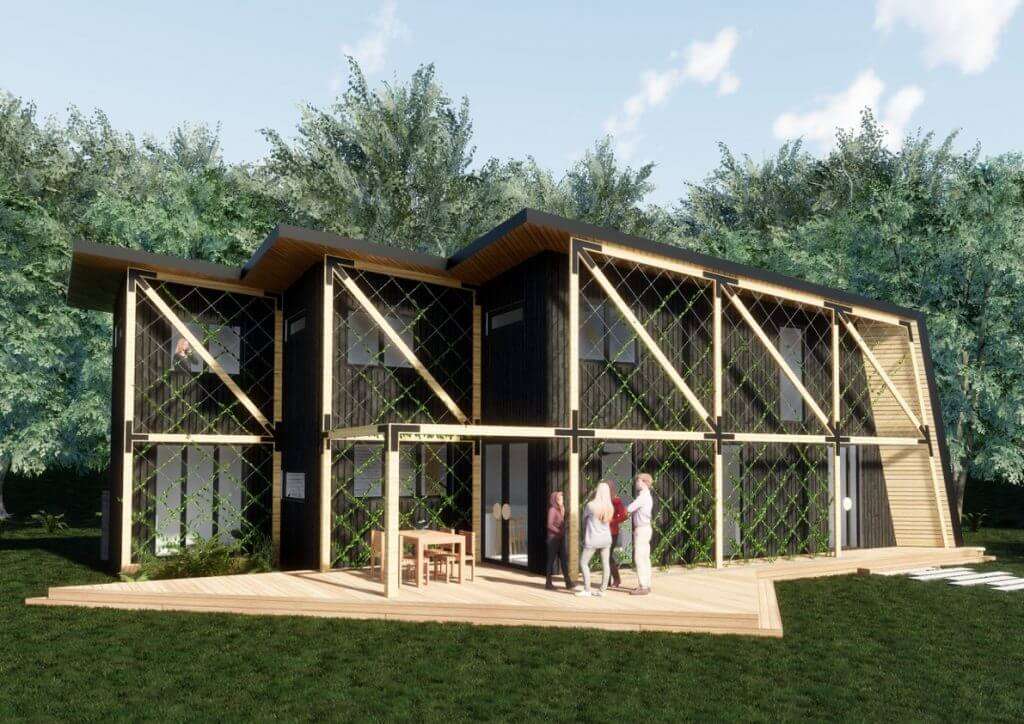 The Hacksaw House, which previously was a small brick veneer property, achieves a NatHERS 10 Star energy rating. McLeod, Victoria.
The Hacksaw House, which previously was a small brick veneer property, achieves a NatHERS 10 Star energy rating. McLeod, Victoria. Image source: Green Magazine
The house features a passive solar design and a “zig-zagging north-façade” for maximum sunlight throughout the day.
The designers put emphasis on the thermal performance of the house, used regenerative energy, and made sure the building materials come from sustainable sources and are recycled where possible.
For the tenants, this means reduced expenses on heating and cooling, less waste, and a reduced carbon footprint.
Read through this guide to see what the NatHERS certificate looks like and what information it contains.
Energy efficiency has the lion share when it comes to a building’s sustainable design and operation, however, there are certification schemes that look beyond the energy use.
Green Star
Website: https://new.gbca.org.au/rate/green-star/
Transport, energy, indoor environment quality, water, materials, land use, emissions, management, and innovation.
Green Star looks at these nine aspects of the building to verify that a building or a community project is sustainable.
Green Star was founded in 2003 by the Green Building Council of Australia. It’s a voluntary rating system and is used nationwide.
Whether your building is a school or a shopping centre, an office building or a library, a hospital or a hotel, it can achieve a Green Star rating. Moreover, Green Star certifies not only buildings but also entire communities.
A Green Star rating may be used as a Performance Solution to demonstrate that a non-residential building is compliant with the NCC’s energy efficiency requirements outlined in JP1 and JP3.
Six stars are the maximum number your building project can achieve. You should aim for 45 points and above to be certified.
 Image source: Green Building Council Australia
Image source: Green Building Council Australia
A project’s rating is determined by the awarded points in each category plus any innovation points. Green star certification fees can be found on the page Certification fees.
“When you build an entire Green Star Community the benefits are far-reaching. Curtin University has shown true leadership in ensuring that students, staff, and visitors will live, work and study in a healthy, resilient, and positive environment,” says the GBCA’s CEO Davina Rooney.
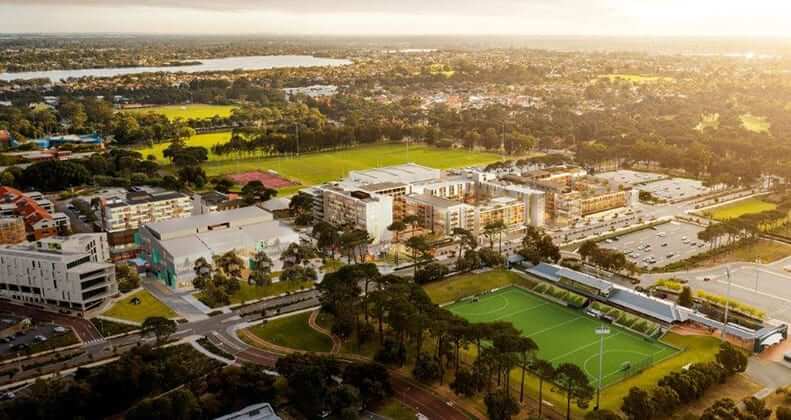 Curtin University was awarded a 5 Star Green Star – Communities rating. Perth, Western Australia.
Curtin University was awarded a 5 Star Green Star – Communities rating. Perth, Western Australia.Image source: Curtin University
Curtin University was awarded Australia’s first 5 Star Green Star in 2015 and was recertified in 2020 for its ongoing commitment to sustainability, liveability, and innovation.
The university’s building design is so detail-oriented that it encourages healthy lifestyle, provides access to public transport, and has stormwater management systems in place.
Another six-star rating system comes next on our list.
NABERS – National Australian Built Environment Rating System
Website: https://www.nabers.gov.au/
As stated on their official website, 78 percent of Australia’s office space is rated with NABERS.
It’s a six-star rating system that provides scores based on the energy and water efficiency, waste reduction, emissions, and indoor thermal comfort. It then compares the generated score to those of similar buildings.
To issue a star rating, NABERS analyses the actual use of energy and water over the span of 12 months. This means that NABERS can be used only for an existing building to check if it performs as well as it was designed to.
A wide range of buildings can qualify for NABERS certification: apartment and office buildings, office tenancies, shopping and data centers, public hospitals, and hotels.
While NABERS is managed by the NSW Department of Planning, Industry and Environment, its operation is overseen by a national Steering Committee composed of all state and territory representatives and the Australian Government.
NABERS is recognised as a verification method in the NCC 2019 to help you meet the updated energy efficiency requirements. If you sell or lease an office space, NABERS ratings are required for spaces of 1000 square metres or more.
Find out more about each building type and NABERS administration fees.
Melbourne has an example to share.
To deliver an environmentally sustainable design and reduce operating costs, the designers of 550 Bourke Street opted for innovative solutions, such as DALI lighting system, destination-oriented elevator system, high-performance glazing and other features.
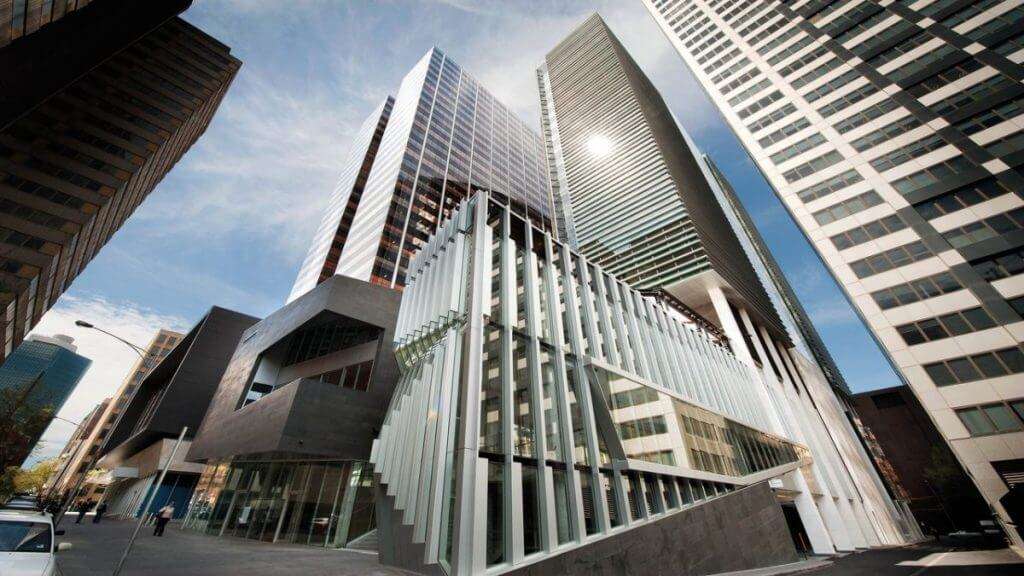
550 Bourke Street achieves a 5.5 star NABERS Energy Base Building Rating and a 3.5 NABERS Water Rating. Melbourne, Victoria.
Image source: The Fifth Estate
As a result, 550 Bourke Street, a 19 storey, 25,600 sqm commercial tower, achieved a 5.5 star NABERS Energy Base Building Rating and a 3.5 NABERS Water Rating.
This office building has a distinctive facade with horizontal aluminium transoms on the higher levels of the building. It has been designed to ensure maximum sun penetration.
BEEC – Building Energy Efficiency Certificate
Website: https://www.cbd.gov.au/overview-of-the-program/what-is-cbd
In most cases when you offer a commercial office space of 1000 square metres or more for sale or lease you are required to disclose to prospective buyers and tenants how energy efficient your building is to help them make an informed decision.
That’s why office building owners need to apply to get a Building Energy Efficiency Certificate or BEEC. To obtain the certificate, you should provide energy efficiency information to a regulatory program called the Commercial Building Disclosure (CBD).
The CBD Program is an initiative of the Council of Australian Governments (COAG). It was established by the Building Energy Efficiency Disclosure Act 2010 and is managed by the Department of Industry, Science, Energy and Resources.
To check if you are required to comply with CBD, visit the page Does this apply to me?
BEECs are valid for up to 12 months and include:
- the building’s National Australian Built Environment Rating System (NABERS) Energy for offices’ star rating.
- a tenancy lighting assessment of the relevant area of the building.
The answers to your further questions can be found on CBD’s FAQ page.
BASIX – Building Sustainability Index
Website: https://www.planningportal.nsw.gov.au/basix
BASIX is a mandatory regulation for design and construction of residential developments (single and multi-dwellings) in NSW since 2004. The goal is to create more cost-efficient and comfortable homes.
In addition, if you’re undertaking renovations to an existing dwelling of $50,000 in cost or more, or installing a pool or spa of more than 40,000 litres, you are required to submit a BASIX certificate.
Use the online BASIX assessment tool to assess the energy and water use and thermal comfort of your residential development.
Software tools such as BERS (Building Energy Rating Scheme), AccuRate, and First Rate are used to score the building design on its potential energy and water use as well as thermal comfort performance.
Watch the latest webinar to learn further details about the process and requirements for getting certified by BASIX.
Here is an important note: NatHERS energy rating, being thorough and accurate, can be used for the thermal section of the BASIX.
We also have tools on our list that provide scores for specific parts of a building.
Window Energy Rating Scheme (WERS)
Website: https://www.wers.net/
Being made up of over 1000 manufacturers and industry suppliers throughout Australia, WERS acts as a credible system for testing glass and window performance claims.
Surely, window and glass rating alone will not provide a complete picture, however, it can make a big difference if sustainability and energy efficiency are what you pursue in your project.
Rated windows in WERS earn from 0 to 10 stars for both cooling and heating, depending on how they rank against the alternatives. Used nationwide, WERS ranks windows for their energy performance in a typical house.
WERS rates the performance of a single window, not the performance of the total number of windows used in a design. On the other hand, the rating information can be used in energy rating tools, such as NatHERS, to estimate the actual impact on performance for any house.
WERS is an independent and voluntary organisation, managed by the Australian Glass and Window Association (AGWA) and is an accredited member of the Australian Fenestration Rating Council.
Let’s take a tour to Western Australia and visit the Wandi Shed House – “a fully self-contained two-bedroom home” in the south of Perth. The windows and doors are certified by WERS for energy efficiency and protection against bushfire.
While most of the tools look into the environmental and social aspects of a building, there are tools that rate buildings for health safety, too.
WELL Health Safety Rating
Website: https://www.wellcertified.com/
What happens when public health meets building design?
That’s right. A new rating tool is born to measure different features of a building and assess their influence on people who live, work and learn in them.
The certification scheme called WELL Health Safety rating focuses on the design, operations, maintenance, and emergency plans of buildings to reveal how they impact human health and wellness.
Key features the certification takes into account include air, water, light, comfort, nourishment, fitness and mind.
The WELL Health Safety rating has been launched by the International WELL Building Institute (IWBI).
What’s more, in response to the COVID-19 pandemic, the need emerged to implement safety measures in buildings to reinforce confidence that it’s safe to be and work in a building.
Three main areas will be considered to check if a building is eligible for the certification:
- Operational policies to ensure a healthy and safe workplace/facility for both workers and visitors.
- Maintenance protocols to enhance indoor health and safety and reduce the risk of disease transmission.
- Emergency plans to protect people and help them build resilience in similar crises.
Australia currently has 218 WELL-certified projects that make our country one of the leaders in the world in number of projects (together with the U.S., China, and the UK).
Certificates are offered for a wide range of building types: retail, industrial, education, sports & entertainment, hotels and resorts, multi-family and office buildings and more.
Let’s sum up the list on a “beautiful” note.
LBC – The Living Building Challenge
Website: https://living-future.org.au/
Can your building behave like a flower?
If yes, it may be qualified to receive the Living Building Challenge Certificate. LBC doesn’t provide any scores — you either meet the challenge, or you don’t.
Behaving like flowers means being “net positive” on energy, water and waste. You will also need to watch for the list of banned chemicals and materials, and even meet the criteria of beauty.
It’s a voluntary program and is run by Living Future Institute Australia. The ultimate goal is to have a built environment that is environmentally friendly, socially just and culturally rich.
Here is an example.
The Sustainable Buildings Research Centre (SBRC) is the first in Australia to achieve the Living Building Challenge 2.1.
468 solar panels are installed on the roof of the centre to satisfy all the building’s energy requirements.
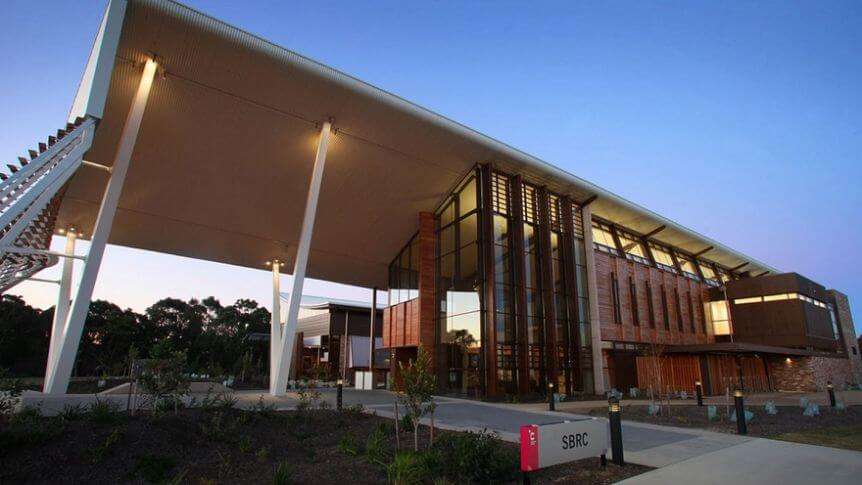
The Sustainable Buildings Research Centre (SBRC) at the University of Wollongong is the first building in Australia to receive the Living Building Challenge Certificate. NSW.
Image source: ABC News
Sustainable means you don’t do any net harm to the environment, while restorative takes it to the next level and addresses the damage that was done in the past.
Let’s Wrap Up!
A house with no bills is no longer a dream, so whether you are an owner, a builder, a building certifier, or an aspiring professional in the construction industry, you can’t ignore today’s major trends.
If you want to build a successful career, you should have a solid understanding of what makes a building sustainable, safe, and healthy.
Knowledge and competence are not gained in one day, but with a reliable and recognized training provider, you will be able to become a sought-after specialist easily and quickly.
Back to Basics, a nationally recognized training provider, can help. Here is how.
- We provide access to training materials written and developed by builders for builders.
- You receive training from industry experts.
- You learn at your own pace.
- You join a large and vibrant community of students and professionals.
- The cost you pay is all-inclusive.
If you would like more information on the courses Back to Basics offers or are interested in upgrading your resume with one of our qualifications, Call us on 1300 855 713 or email enquiries@backtobasics.edu.au to find out more.